Three miles long by two wide: Why touring Ireland's tiny islands makes no sense at all – yet is utterly addictive
Hearing rumours of empty space, tranquillity and generous repopulation grants, we set sail for Ireland's offshore islands, dreaming of freedom
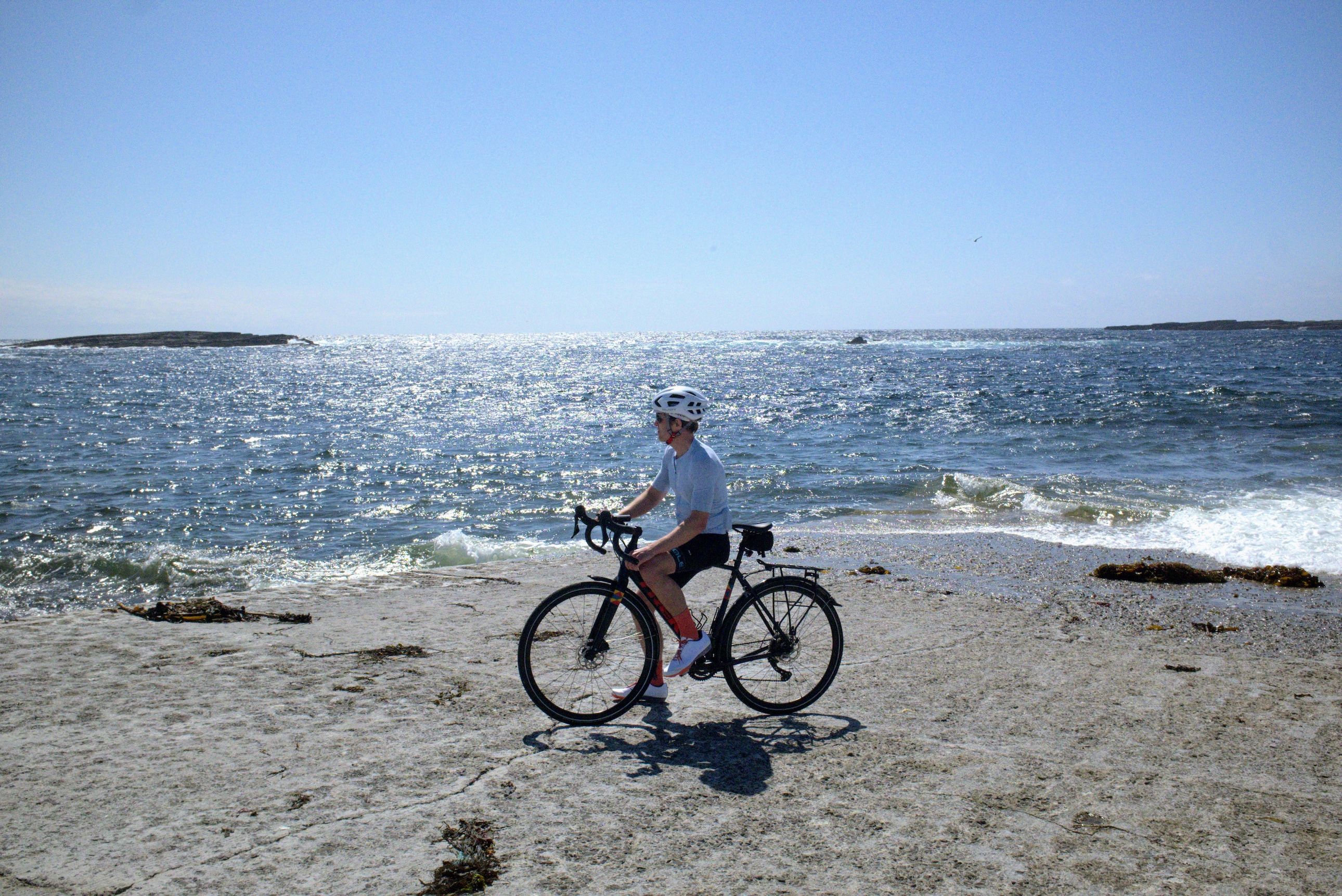
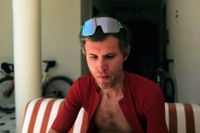
"It’s been almost too hot,” Simon shouts above the roar as we stride along Galway seafront, leaning into the wind, eager for our first pint of the trip. We’d almost walked past him – just a pair of rain-spattered glasses and a nose poking from the small ‘o’ of his waterproof hood. Too hot? From anyone else I’d assume irony, but Simon is a solicitor by trade, and I know when he’s about to deliver evidence. Sure enough, he recounts a glorious yet sweltering ride down through Donegal, the heatwave breaking only last night – just in time for our arrival.
It’s late June, and my partner Anton and I have one goal: to strike out west as far as the land will take us, not stopping at the coast but pushing on to the offshore islands, until there’s nothing in front of us but sea. The motivation is complicated, but we’ll get to that. Our friend Simon has been here a week already, camp-and-ride touring in his van, and is joining us for a sociable finale to what has been, by his account, a Saharan slog. “Don’t worry,” I assure him as he savours a long draught of cold Guinness, “we won’t be succumbing to heatstroke over the next few days.” I hold up my phone: five grey clouds in a row, three with raindrops, one with a shyly peeping sun.
The next morning, it’s almost a relief that it’s only drizzling as we collect the bikes and load them into the van. A short drive takes us to Rossaveel, where the passenger ferry departs for our first island: Inishmore (Inis Mór, meaning ‘big island’), the largest of the Aran archipelago. Overnight provisions strapped to our bikes, we freewheel down to the quayside and join the queue huddled under an undersized shelter. Standing there waiting to swap a landmass with almost limitless riding terrain for a 12-square-mile rock in the Atlantic, I remind the other two that we’re here on a voyage of discovery.
Earlier in the year, I’d read about an Irish government policy offering up to €84,000 (£73,000) to anyone willing to buy a derelict property on an offshore island and make it habitable again. It was part of an effort to reverse a stark trend: in 1911, Ireland had 124 inhabited islands with a combined population of 24,700; by 2016, that number had fallen to just 2,734 islanders on 23 islands. Coming from a corner of southern England where new housing estates are being thrown up on every scrap of brownfield despite our already jammed, potholed roads, depopulation struck me as an enviable problem. Then again, I was probably romanticising – and if I was to avoid the cliché of looking to the islands to fulfil, in the words of historian Diarmaid Ferriter, “a utopian ideal of escape from oppressive urbanisation,” I needed to get a real taste of island life.
The edge of Europe
Disembarking onto Inishmore, any notion of underpopulation vanishes. The place is abuzz with tourists, most of them zooming around on hired bikes. Pedalling west towards our B&B, we find ourselves in near nose-to-tail traffic: wobbling riders of all ages, veering as the views distract them or as sightseer minibuses steam past in the opposite direction. It’s a joyful scene – so many families enjoying themselves on bikes – but the theme-park vibe isn’t quite what I’d had in mind. My worry lifts as I’m reminded that tourists move in predictable herds. Beyond the cafe and the Aran sweater shop at the island’s central crossroads, the roads empty and the western horizon is ours. Even more miraculously, the sun is beginning to break through the clouds.
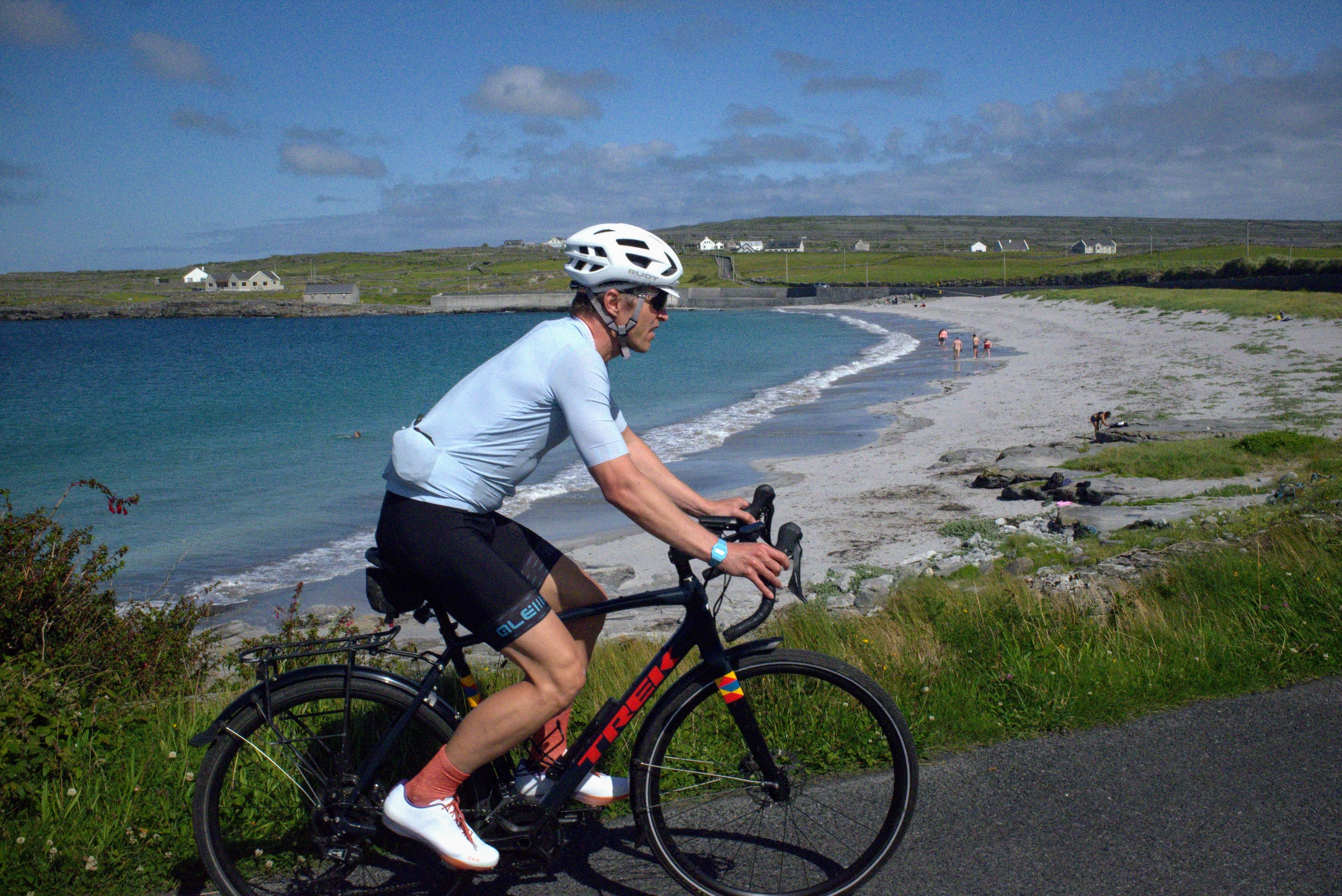
Making the most of the sunshine at Kilmurvey Beach on Inishmore
With blue sky expanding above us, the road first kicks up with a near-20% ramp, before easing into a gradual descent towards the Aran Islands’ westernmost tip. On either side, green fields give way to a vast limestone patio that was scoured smooth by Ice Age glaciers but which looks like a runway laid expressly to launch us off the edge of the continent. The road ends where the glittering Atlantic begins, and as we roll down onto the promontory, I understand what Seamus Heaney was getting at when he called the Aran Islands “three stepping stones out of Europe”. Standing with the ocean lapping at my feet, the thought that the next landfall is America makes the world feel suddenly too big and too small at the same time.
That evening, as we ride back towards the harbour for dinner, a strange grunting cuts through the otherwise perfect silence. Not quite a honk, not quite a bark – more like a dog trying to cough up a goose – it’s coming from the rocky outcrops on our left. We stop, squint our eyes and realise that some of the rocks are squirming: a group of at least eight seals are holding a very vocal soirée. Minutes later, at our own feeding frenzy at Joe Watty’s pub, we plot the next day: a quick historical excursion before a dash back for the ferry and onward to our next island. Simon insists on three courses, worried by a rumour that a planned power outage might jeopardise his full Irish breakfast.
The latest race content, interviews, features, reviews and expert buying guides, direct to your inbox!
“A GROUP OF AT LEAST EIGHT SEALS ARE HOLDING A VERY VOCAL SOIRÉE”
Faithful to our plan, we rise early and hike up to Dún Aonghasa, the clifftop fort built some 3,000 years ago. Three massive stone walls enclose a semicircle around the cliff edge – though why a sheer drop into the Atlantic ever needed defending is anyone’s guess. As we clamber inside, Simon is still lamenting his cold breakfast when a lone Frenchman raises his clarinet and starts playing a reedy dirge. It creates such a haunting ambience that I’m convinced this place was built for ceremony, not war. Between us and the sea, there’s no fence, no railing, just open sky – and I’m not about to become the day’s sacrifice. Dropping to my stomach, I wriggle seal-like to peer over the edge. Far below, gulls and gannets are specks against the dark sea, and scale is once again called in question: the 100m drop looks at least a kilometre.
By midday, we’re back on the ferry, watching Inishmore recede behind us. Our first task back on the mainland is to get ourselves rapidly ensconced in the nearest Spar, stuffing our faces with baguettes and flapjacks to fuel the afternoon’s ‘transition stage’ to Clifden. The route northwest is classic Connemara: long, serene stretches of peat bog, sparkling loughs on either side, and the horizon jagged with the Twelve Pins and Maumturks. With the wind behind us and only gentle undulations to overcome, we pass more donkeys than cars, and very nearly sail all the way without incident – until Anton takes an unexplained tumble less than 500m from the hotel door. Thankfully it’s just a graze – nothing that can’t be salved by Clifden’s plentiful supply of liquid medicinals.
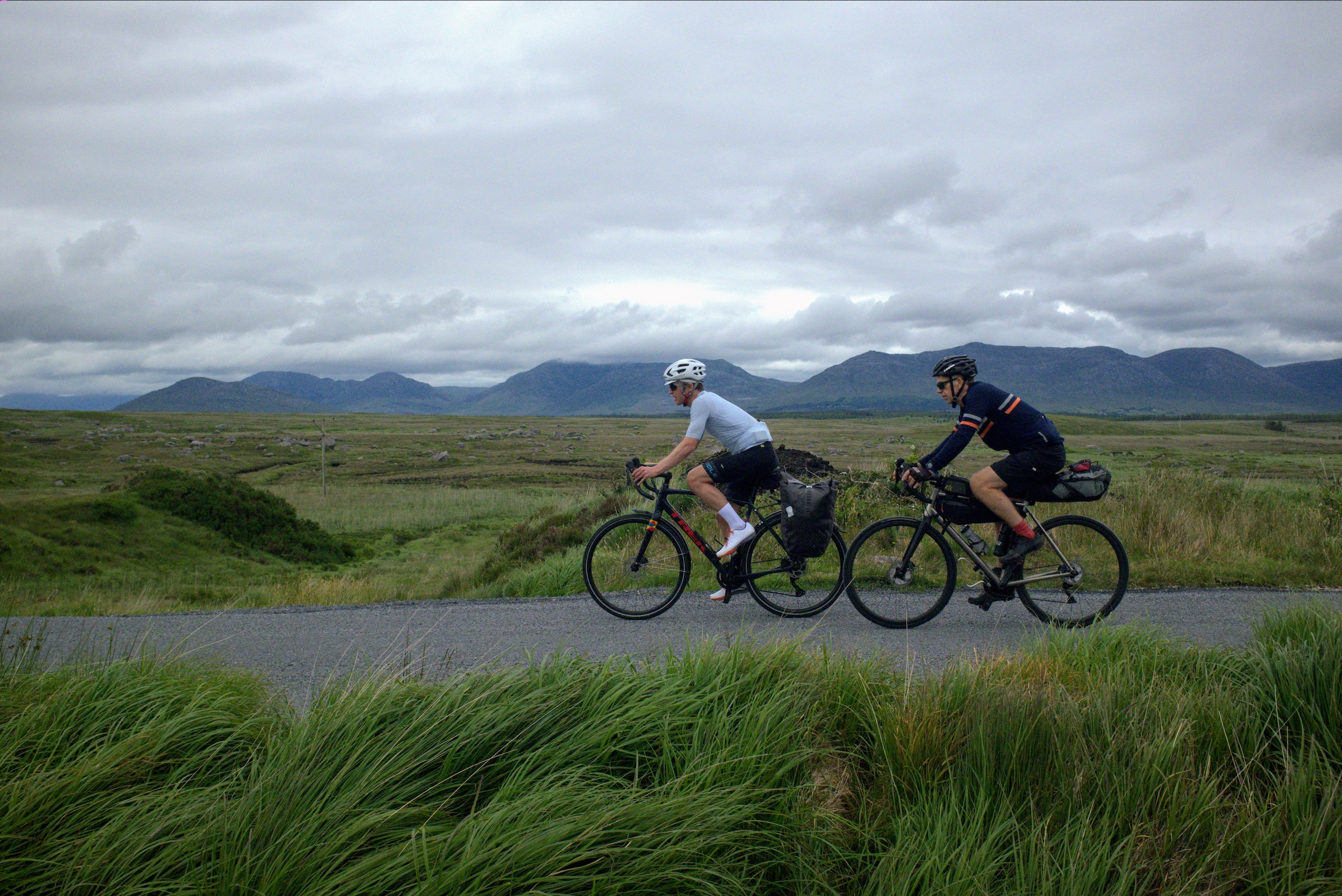
Heading for Clifden through peat bogs backdropped by the Maumturks
Taking the Sky Road
Morning brings bright sun, a chilly breeze and the promise of our next island. The direct route to the ferry is only a few miles, but when the scenic alternative is called the Sky Road, it’s impossible to resist. Sweeping views over the bay more than justify the extra climb while demanding more photo stops than our ferry schedule allows; by the time we roll onto Cleggan quay the boat is already being loaded. “I’ll probably say this only once: water creates spray,” deadpans the gruff ferryman, “and there’s a good few million gallons of the stuff out there,” he rolls his eyes seaward as he shepherds us below deck.
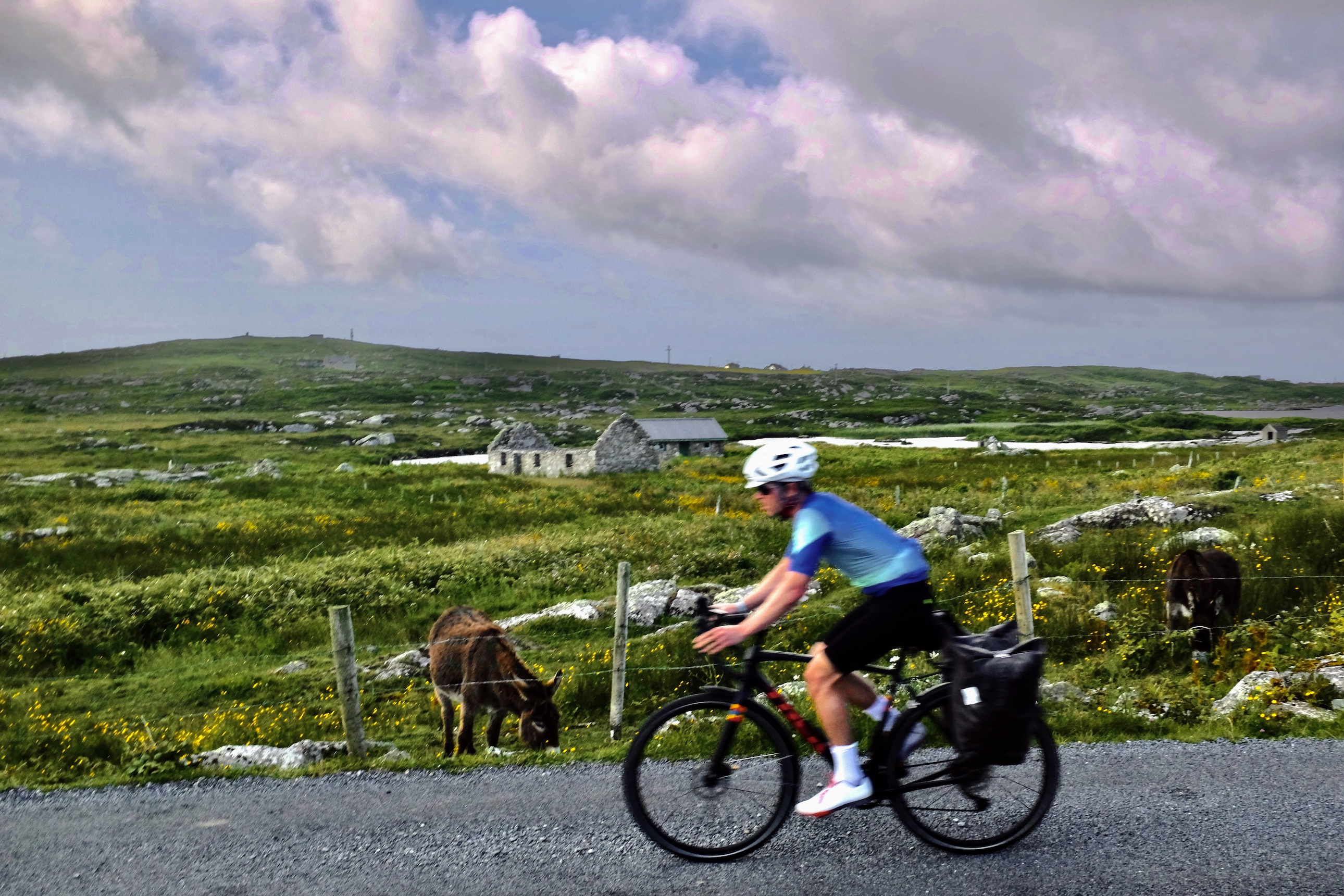
"More donkeys than cars" – as if proof were needed
Stepping ashore on Inishbofin (Inis Bó Finne, meaning ‘island of the white cow’) – current population 180, down from 1,400 in 1841 – the contrast with Inishmore is immediate: no hint of tourist trap, and no other cyclists in sight. After dropping our panniers at the hotel, we pedal to the shop-cum-post office for snacks but end up with a haul of gifts from the gloriously eclectic stock: everything from pro-Palestine pendants to langoustine-shaped beanbags. When the jovial shopkeeper tells us he has lived here for a year, I ask how he’s adjusted to island life. “They’ll carry me off at gunpoint or in a box,” he replies, and I guess that means he likes it. Before we can find out, he shoos us out the door towards the harbour ruins, warning the tide will cut us off unless we get a move on.
The star-shaped fort at the harbour mouth was built after Inishbofin fell to Oliver Cromwell in 1652, having held out longer than anywhere else. Sheltering from the wind behind its thick stone walls, I shiver at the thought of the priests rounded up and imprisoned here. With the sea encroaching, we hurry back across the causeway, and it takes a moment to realise why I’m singing Elvis Costello on repeat. After one too many choruses of ‘Oliver’s Army’, Simon interrupts to point out that beneath the chirpy melody lies a tirade against centuries of British colonialism in Ireland, Palestine and beyond. Only on this western fringe could 400 years of history leap so lyrically into the present. Speaking of wild edges, the tide has kept us to a tight schedule, so we’ve the rest of the afternoon free for a lap of the island.
As we plot our route at the roadside, a farmer pulls up and starts untying a gate: “Are you lost? You’d do well to get lost here.” He has a point – Inishbofin is only 3.4 miles long by two miles wide. “I need you to help me. You’ll stand there, and you there,” he commands, and we grin noncommittally, assuming he’s joking – until he roars off into the field, dispatching his sheepdog. Only then do we realise we’re human barricades, blocking the flock’s escape down the road. The pressure feels absurdly high, but proving ourselves up to the task brings an almost unseemly sense of achievement. Stragglers safely through, we resume our ride and promptly take a wrong turn – lost after all – just as the first fat drops of rain spatter our forearms. Within minutes it’s lashing down, and we hightail it to the nearest shelter, a cafe serving homemade cakes and local beers. As the storm begins to look set in for the evening, so too, inevitably, does our drinking.

Accidental shepherds – earning our keep on Inishbofin
Change as good as a rest
Back at the Doonmore – the westernmost hotel in the British Isles – dinner is served in what Andrew Murray, the owner, tells us was once his great-grandfather’s bedroom. We continue to drink as steadily as the rain, proudly recounting our special moment as herdsmen. Murray nods and says he can explain it, but only in Irish: meitheal. There is no equivalent word in English, but it has to do with neighbourliness and mutual reliance – something island communities can’t survive without. It reminds him of another special quality of Inishbofin which he recognised only after Covid. Returning guests suddenly seemed extra appreciative of the island, and he couldn’t understand why – until someone pointed it out: here, nothing had changed.
“COULD I START AFRESH HERE? IT’S A TEMPTING IDEA”
By the time we squeeze into the hotel’s wood-panelled bar, every table is taken, with more still arriving, coats and boots dripping. We edge in at the bar, and before long fiddles and an accordion appear at a corner table. There’s no mic, no announcement – only a quiet word from Murray that the lead musician is a member of Idaho country-rock band Reckless Kelly. His songs are mostly cowboy ballads full of time-worn longing, and in the pauses between them, he and the others mull over their origins – old Irish and English folk tunes carried back and forth, slowly reshaped to fit new landscapes. Listening in, I’m struck by the endless ache and energy of departures, and reminded that ours is close at hand: we leave in the morning.
I think again about that grant, the islands’ need for newcomers. Could I buy a derelict cottage here, start afresh? It’s a tempting idea: the constancy, the kindness, the music. Yet it’s daunting too: the remoteness, the power cuts, the endless rain that has us drinking instead of riding. The next morning, with weather and time against us and our heads as thick as the mizzle, we walk the island’s road-free Westquarter. It’s not just unspoiled, but Edenic: gannets slicing into shoals offshore, flutey flypasts from territorial oystercatchers, seals bobbing in the bays. Can all this really stay the same, I wonder, as another squall slaps my face. “Any sign of your heatwave?” I ask Simon as he scans the sea through binoculars. Anton half-jokes that if climate change carries on, this could end up the only place still cool enough for a summer holiday, Europe’s last party island. It’s a sobering thought, and one that makes up my mind: we’ll have to come back, not for what’s stayed the same, but to see how much has changed.

The trip gets an unplugged swansong at Inishbofin’s Doonmore Hotel
Key travel information
● How to get there
We flew with Easyjet from London Gatwick to Shannon (£60-£100 return), then took an hour’s taxi ride to Galway. The Inishmore and Inishbofin ferry crossings take 30-40min and cost approx €25 return.
● Where to stay
On Inishmore we stayed at Kilmurvey House, a large B&B beside the main beach (from €149; kilmurvey-house.com). In Clifden, the Quay House offers harbour views and startling animal skins (from €190; thequayhouse. com). On Inishbofin, Murray’s Doonmore Hotel is the heart of the island’s music scene (from €120; doonmore.com). All prices are double/twin room per night.
● Bike hire
Our bikes were provided by West Ireland Cycling in Galway, which offers a quality fleet of Trek touring, road and gravel bikes (€25–€50 per day): westirelandcycling.com.
● Irish islands by bike
A longer trip could follow the Wild Atlantic Way, hopping between the Arans, Inishbofin, Inishturk and Clare Island before a final night of live music in Westport.
Thanks to Claire McCune and Tourism Ireland.
This article was first published in the 23 October 2025 print edition of Cycling Weekly magazine – available to buy on the newsstand every Thursday (UK only) while digital versions are available on Apple News and Readly. Subscriptions through Magazine's Direct.
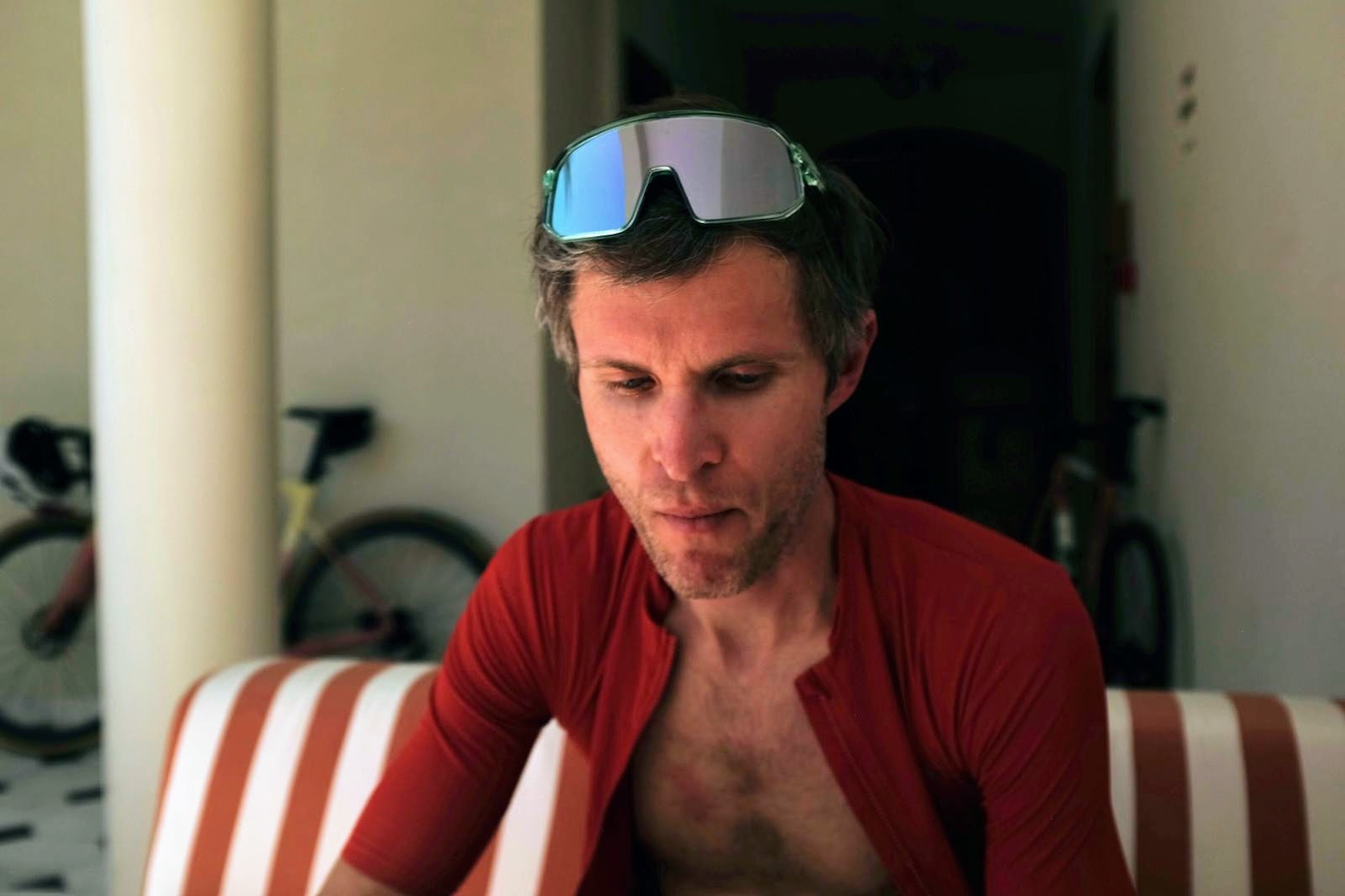
David Bradford is senior editor of Cycling Weekly's print edition, and has been writing and editing professionally for 20 years. His work has appeared in national newspapers and magazines including the Independent, the Guardian, the Times, the Irish Times, Vice.com and Runner’s World. Alongside his love of cycling, David is a long-distance runner with a marathon personal best of 2hr 28min. Diagnosed with retinitis pigmentosa (RP) in 2006, he also writes personal essays exploring sight loss, place, nature and social history. His essay 'Undertow' was published in the anthology Going to Ground (Little Toller, 2024). Follow on Bluesky: dbfreelance.co.uk
You must confirm your public display name before commenting
Please logout and then login again, you will then be prompted to enter your display name.